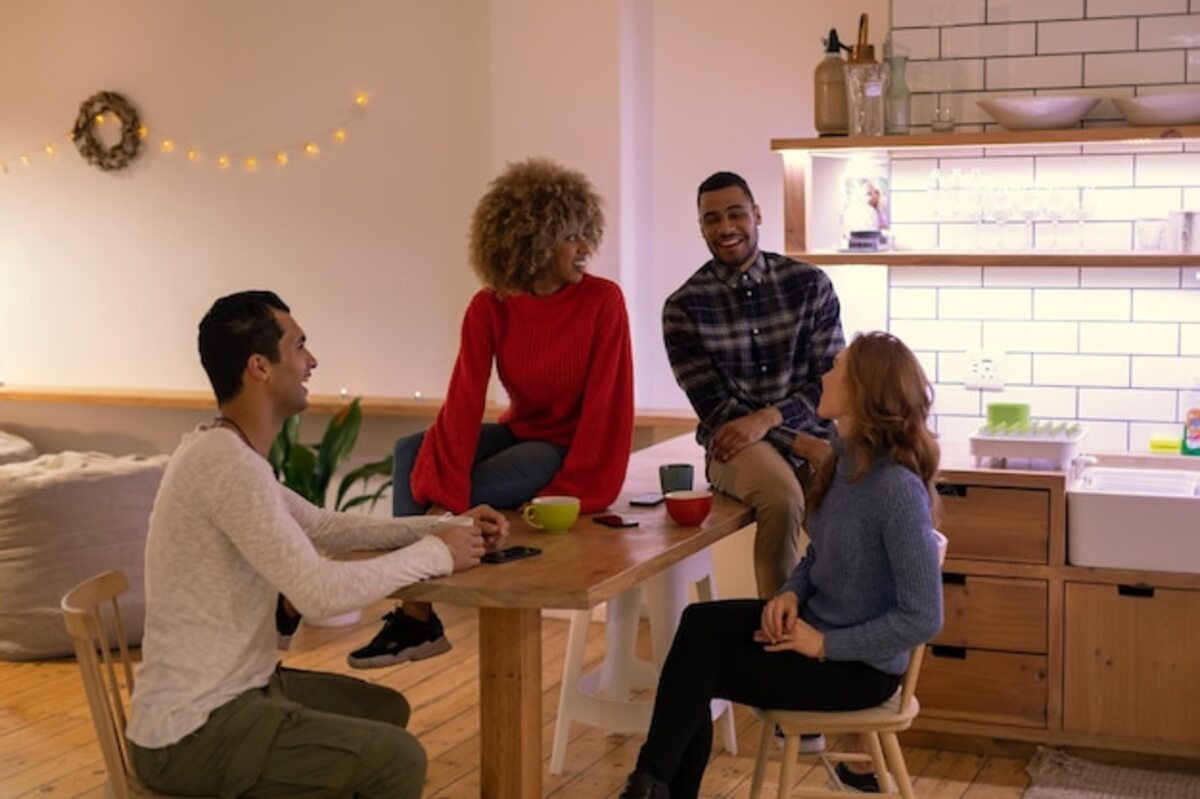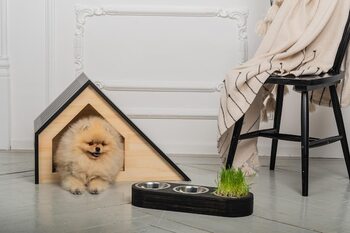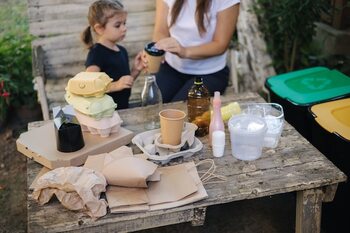Renew your home with spaces that encourage family collaboration.

Renew your home with spaces that encourage family collaboration is an invitation to transform your environment into a place where every family member feels connected and engaged. By creating areas designed for sharing moments, ideas, and activities, you will not only improve coexistence but also strengthen family ties. Discover how simple modifications can turn your home into the beating heart of collaboration and family love.
The importance of collaborative spaces at home
The importance of collaborative spaces at home lies in their ability to foster communication and connection among family members. An environment that promotes collaboration not only facilitates the exchange of ideas but also allows each person to feel valued and heard. By designing specific areas, such as a shared reading nook or a family game table, a conducive atmosphere for interaction and teamwork is created. These spaces become the ideal setting where everyday experiences turn into opportunities to learn from one another and strengthen interpersonal relationships.
Additionally, collaborative spaces contribute to the development of essential social skills. By participating together in activities such as cooking, crafting, or family projects, each member has the opportunity to contribute their creativity and collaborate with others. This type of interaction not only enhances family dynamics but also teaches children fundamental values such as respect, empathy, and teamwork. Ultimately, by integrating areas dedicated to collaboration within the home, one is investing in a more harmonious and connected future for the entire family.
2. Ideas for shared workspaces
Creating shared workspaces at home can be an excellent way to encourage family collaboration and enhance the creativity of all its members. Imagine a corner dedicated to activities like project planning, completing school assignments, or even crafting. This space can be equipped with large tables, whiteboards, and shelves for materials, which not only promotes teamwork but also stimulates idea exchange and collaborative learning. The key is to design a welcoming environment that invites everyone to participate and collaborate.
The layout of the furniture is essential for achieving a collaborative environment. Choose circular tables that facilitate communication and foster a sense of equality among participants. Additionally, consider incorporating elements such as comfortable chairs and inspiring decorations that reflect family interests. Creating an area with good natural lighting and technological accessories can also enhance the efficiency of shared work, allowing each member to feel motivated and connected to the creative process. In this way, shared workspaces become places where not only common goals are achieved, but also emotional bonds among family members are strengthened.
3. Open kitchens: the center of family interactions
Open kitchens have become the heart of modern homes, serving as the epicenter of family interactions. By eliminating walls and barriers, this design invites togetherness, allowing all family members to participate in everyday activities such as cooking, eating, or simply chatting about their day. The kitchen ceases to be an isolated space and transforms into a place where conversations flow naturally, fostering a warm and welcoming atmosphere that strengthens family bonds. You can involve each member in preparing a meal or planning the weekly menu, which not only creates memorable moments but also teaches valuable skills.
Additionally, open kitchens allow for greater brightness and spaciousness, creating a more pleasant atmosphere for sharing. Equipped with central islands or breakfast bars, these areas can serve as informal meeting points where one can enjoy coffee in the morning or do homework in the afternoon. Well-designed spaces invite you to leave behind technological distractions and focus on what truly matters: time together. By establishing daily rhythms around the open kitchen, both collaboration and a sense of belonging within the home are fostered, turning each meal into a shared celebration.
4. Recreational areas: fostering play and creativity
Recreational areas are essential to stimulate play and creativity at home. By designing a space dedicated to playful activities, you can provide each family member with a refuge to express themselves freely. Whether it's a corner for board games, an art zone, or a small improvised theater, these areas allow both children and adults to engage in joint activities that promote collaboration and mutual understanding. Shared fun becomes a powerful tool for building memories and strengthening family bonds.
In addition, by promoting collaborative play, skills such as problem-solving and creativity are awakened. Recreational areas act as catalysts for meaningful interactions, where ideas flow freely and positive dynamics are generated. Incorporating versatile elements, such as magnetic boards or building blocks, not only stimulates imagination but also creates opportunities for everyone to contribute their unique talents to the creative process. Thus, these spaces not only enrich family relationships but also provide a conducive environment for learning and growing together.
5. Incorporating technology to facilitate collaboration
Incorporating technology into your home can be a key factor in facilitating and enhancing family collaboration. From communication systems like video calls to applications that allow sharing calendars and reminders, technology offers tools that can help keep everyone on the same page. Consider creating a central space in the home, such as an office or a shared work area, equipped with smart devices that enable family members to interact and collaborate on common projects, whether organizing household tasks or planning recreational activities.
Additionally, integrating interactive technologies, such as digital whiteboards or shared screens, can transform the way ideas are exchanged and family problems are resolved. By using these resources, you not only foster a collaborative environment but also make learning a collective experience. For example, when planning family vacations or engaging in educational activities together, technology can serve as a bridge to unite everyone around shared goals. In this way, your home becomes a space where each member feels valued and motivated to contribute actively.
6. Design of multifunctional furniture to optimize space
The design of multifunctional furniture has become an essential solution for those looking to optimize space in their homes without sacrificing aesthetics or functionality. By choosing pieces that serve multiple functions, such as a sofa bed or an extendable table, you can maximize every corner of your house, allowing spaces to adapt to different family activities. This approach is not only practical but also encourages collaboration by creating versatile areas where everyone can participate at different times of the day, from family dinners to playtime or joint work.
Additionally, multifunctional furniture can become catalysts for family interaction. For example, a kitchen island that serves as a preparation area and also as a dining spot can invite family members to share culinary tasks and enjoy meals together. Likewise, a desk that folds to become a game table can facilitate fun and creative moments between parents and children. By integrating these smart pieces into your home, you not only optimize the available space but also create an environment where family connections thrive through shared activities.
7. Outdoor spaces as family meeting points
Outdoor spaces have immense potential to become true family meeting points. Whether it's a patio, a garden, or a terrace, these places can be transformed into cozy areas that encourage interaction and teamwork. By incorporating comfortable furniture like benches, outdoor tables, and umbrellas or pergolas, an environment is created that is conducive to enjoying family meals, outdoor games, or simply relaxing together under the sun. This contact with nature not only improves mood but also promotes joint activities that help strengthen family bonds.
Additionally, outdoor spaces allow for the inclusion of elements that stimulate family collaboration. For example, a community garden can be an excellent way to teach children about responsibility and teamwork while they grow their own food. Games like frisbee or sports activities invite everyone to participate and enjoy time together. With each shared laugh and every joint project accomplished outdoors, indelible memories are created that strengthen family ties and promote a culture of collaboration within the home.
8. How to involve all members in home decoration
Involving all family members in the home decorating process not only makes each person feel valued but also fosters a sense of belonging and collaboration. An excellent way to start is by organizing a family meeting where everyone can express their ideas and preferences about how they would like the space to look. From choosing colors and furniture to deciding on artwork or decorative elements, allowing everyone to actively and creatively participate in the decision-making can result in a home that truly reflects the collective personality of the family. The goal is to create an environment where every corner tells a shared story.
Additionally, assigning specific tasks based on individual skills and interests can make the process even more enriching. For example, if someone has a talent for painting, they could take charge of bringing a wall to life with a mural; while another member with design inclinations could help organize the furniture to maximize space and functionality. By working together on these projects, not only is a satisfying aesthetic result achieved, but memorable moments are also created that will strengthen family bonds. Thus, by renovating your home with the active participation of all members, you achieve not only beautiful and practical spaces but also an environment filled with love and collaboration.
9. Emotional benefits of a collaborative home
A collaborative home is not just about physical spaces, but it also has a profound impact on the emotional well-being of its inhabitants. By fostering collaboration and interaction among family members, opportunities are created to strengthen emotional bonds. Shared activities, whether cooking together in an open kitchen or enjoying games in a room designed for that purpose, create meaningful memories that nurture relationships. This emotional connection is essential for the development of a healthy family environment where everyone feels valued and heard.
Additionally, a home that promotes collaboration helps reduce stress and anxiety by providing a sense of belonging and security. When family members work together towards common goals, such as organizing space or planning recreational activities, they experience an increase in their self-esteem and personal satisfaction. The open communication that arises from these spaces fosters an environment where every voice matters, contributing to effective conflict resolution and the development of essential social skills. Ultimately, these positive dynamics transform your home into an emotional refuge where everyone can grow and thrive together.
10. Establishing family routines that strengthen bonds
Establishing family routines is a powerful tool for strengthening the bonds among all household members. These practices not only promote collaboration but also create a sense of belonging and security in the family environment. Whether through weekly dinners where stories of the day are shared, game nights in which everyone participates, or a daily moment dedicated to reading together, these regular activities allow each person to feel valued and heard. The key is to be consistent and to make these routines a priority, which will help build shared memories that endure over time.
By involving all family members in the planning and execution of these routines, a collaborative environment is promoted where everyone can contribute their ideas and preferences. This not only reinforces the sense of community within the home but also teaches important skills such as empathy and teamwork. Over time, these simple daily interactions can transform complex family dynamics into more harmonious and loving relationships. So start today by establishing those routines; your home can become a place where every shared moment counts and where family ties strengthen day by day.



